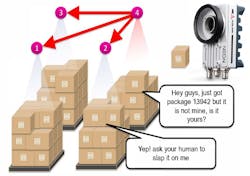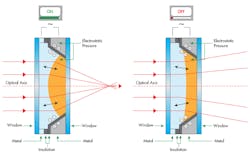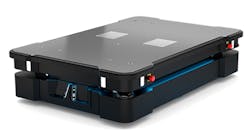While it might seem like robots are taking over everything, humans are very much still in demand. In fact, the lack of skilled labor could be one of the larger drivers of technology. “We are facing a looming skills gap in the manufacturing industry that we need to bridge by all means possible,” says Esben Østergaard, founder and CTO of Universal Robots (UR). “Facilitating knowledge creation and access to our [collaborative] robots is an important step in that direction.”
“One of the drivers in metal additive manufacturing is the skills gap,” affirms Dr. Ryan Dehoff, the Deposition Science and Technology Group leader for Oak Ridge National Laboratory. “Additive manufacturing is able to automate some of the processes, [but] manufacturers are having trouble finding skilled workers. There is a lot of interest in using metal additive manufacturing to fill the demand for welders.”
With that in mind, the following takes a look at the current robotic trends and where they might be leading us in the future.
The ability to track packages and use camera technology to monitor larger areas will be increasingly important when scaling technology. Sensors can offer challenges such as limited coverage while, depending on the operation, a single camera can replace multiple sensors. In a logistics application RFID is popular, but requires everything to be read needing a chip.
Machine Vision
IoT sensors can provide a data point and even stream real-time data. However, these sensors are still only one point of information. IoT en masse not only means having many sensors, but being able to power and connect everything. One of the tips in scaling IoT is to be aware of battery life. Depending on the size of a project a lot of labor could be spent just replacing batteries.
Camera technology has advanced to where is it possible to get data points from each pixel of an image. With 3D vision technologies and other advancements, it could be possible for a single camera to cover larger areas and provide data for multiple variables, such as distance or temperature. For example, ADLINK has worked with machine vision for processes such as optical inspection.
One way to increase production with technology is to help the workers companies currently have. For example, ADLINK Edge is designed to improve packaging and logistics. A single camera can detect and read labels at about 10 ft. If a worker puts a package in the wrong location, the system can detect the error, and communicate with other systems to find where it is supposed to go.
Cognex Corporation is a leader in industrial ID. It announced the addition of liquid lens optics for the DataMan 300 series of fixed-mount barcode readers. The new accessory allows any DataMan 300 reader to be easily upgraded from fixed focus to autofocus. Liquid lens variable autofocus technology is ideal for applications that require a large depth of field or when refocusing is needed after a product changeover.
With e-commerce driving logistics to handle more packages faster, having labels—and reading them—become more important. However, camera solutions often have a set distance or focal point. When it comes to reading labels on a dynamic line able to handle different sized packages errors can occur. Autofocus could solve this, but the operational speeds and robustness might limit its applications.
A liquid lens has been researched for years. This technology is a autofocus technology which enables image-based barcode readers to automatically adapt to changes in working distances for greater depth-of-field range. Liquid lenses use electrical charges to change the shape of the interface between oil and water. This bends the light and brings the image, or barcode, into focus. Speed was a limiting factor, but after years of research companies such as Cognex are producing multiple products with this innovative solution to keep packages and workers moving faster.
Robotic Integration
Robots can be complex pieces of machinery which are difficult to install and program. Therefore, some of the cost is in the resources necessary to get a robot setup and operational. This additional time and cost associated with robotics has put a lot of value in making robots easy to install.
There are basic setup instructions (fastening the robot, cables, and operating systems), but most of these are relatively simple. Also, an OEM will generally offer instructions needed to physically install a robot. Programming a robot is when companies might wonder if they need more resources or specific skilled labor. Some robots have user-friendly programming that limits the skill necessary for a worker to get a device operational.
Some modern robotics can learn in other ways than just programming or G-code. For basic pick-and-place operations it’s possible for a worker to move a robotic arm through the path it needs to travel, enter a task, and then move it to the next location. The hardware and software work together to record these paths and tasks. This simple worker guided operation is another way to program a robot.
With the same pick-and-place example, the tasks are functions that can be anything from holding a position until a button is pushed to manually instruct the robot to continue to the next step in operation. End-effector companies are collaborating with robotic companies to streamline this software, so changing a task, function, or even an end-effector can be as simple as selecting what you want it to do on a teach pendant, downloading the new hardware library, or installing a new app.
Liquid lenses use electrical charges to change the shape of the interface between oil and water. This bends the light and brings the image, or barcode, into focus quickly. Click here to learn more. (Credit: Cognex)
For example, UR is a cobot company focused on making technology ease to use. With the skill gap, cobots are just another way to amplify workers and help automate dangerous, tedious, and repetitive tasks that may slow production. However, as cobots have evolved over the years they have been found in many other applications.
MIT started a type of block coding to help kids learn about coding. Called Scratch, users can use it to program their own interactive stories, games, and animations, then share their creations with others in an online community. Scratch helps young people learn to think creatively, reason systematically, and work collaboratively—essential skills for life in the 21st Century. It is a project of the Lifelong Kindergarten Group at the MIT Media Lab, which is provided free of charge.
Ready Robotics develops easy-to-use cobots mounted to a table with about any connector imaginable, using block programming software. Its cells let users create blocks to perform an action, such as those of an open/close gripper. Then, like building blocks, you select and drag the block you’ve created into a visual stack of blocks.
Benjamin Gibbs, CEO and co-cofounder of Ready Robotics, gave Machine Design a demonstration. Gibbs grabbed a piece of random pipe from the shelf and set it on the robotic cell’s table. Swinging the UR cobot where the end effector was just above the pipe, Gibbs selected a block of code titled “open gripper”. Pulling the gripper onto the part and selecting a “close gripper” block, he continued this for a few minutes, then stood back and ran the program. To setup, program, and run an operation that could load, run, stop, and unload a lathe within reach of the cobot, Gibbs took about five minutes and less than a dozen preprogrammed blocks.
With flowchart logic, Block programming, and a collaborative robot’s ability to simplify the robotic arm’s programming, the robotic cell seems only limited by what end-effector you select and the reach of the arm. In 2018 a paper was published at the CHI Conference on Human Factors in Computing Systems that took a serious look into using this type of block coding for industrial use.
According to “Evaluating CoBlox: A Comparative Study of Robotics Programming Environments for Adult Novices”, “The ability to program these machines often requires years of training, making them inaccessible or impractical for many. This paper rethinks what robot programming interfaces could be in order to make them accessible and intuitive for adult novice programmers. We created a block-based interface for programming a one-armed industrial robot and conducted a study with 67 adult novices comparing it to two programming approaches in widespread use in industry. The results show participants using the block-based interface successfully implemented robot programs faster with no loss in accuracy while reporting higher scores for usability, learnability, and overall satisfaction. The contribution of this work is showing the potential for using block-based programming to make powerful technologies accessible to a wider audience.”
MiR mobile platforms are growing in more ways than one. While the company is growing, so are the products. Autonomous mobile robots are growing in size and payload capacity.
The popularity of block programming seemed to be spreading. Around the same time the paper was published ABB demonstrated to Machine Design how to use its cobot with CoBlox, showing that anyone could program an industrial robot with block programming. It looks like worker guided and block programming in robotics will continue to cut time needed and training to integrate robotic in industrial plants.
Moving into the future, some robotics engineers believe designers will be using open-source user-friendly software to not just program robots, but build custom solutions for their applications; again, with minimal to no experience. Currently there is a lot of attention on ROS. While it stands for robot operating system, it is more of an environment where users can upload and download programs.
Currently, ROS might be a bit difficult or inundating for a non-programmer. However, Rover Robotics’ founder, Nick Fragale, mentions ROS2 could make customizing robotics possible for anyone. He sees a future where an engineer with no electronic or programming experience will be able access ROS2 and build custom robotics like an industrial Lego set. With Cloud analytics, solutions, and services, it is also possible to streamline the whole project by selecting and setting up an Azure or AWS account with the new-found programming and hardware.
Machine vision and easy-to-program cobots are getting robotics into manufacturing, but there is still a lot of help the industry needs before the skills gap is solved. Part two will cover how to reduce the cost associated with robotics and ways to streamline robot and work cell design and setup.





